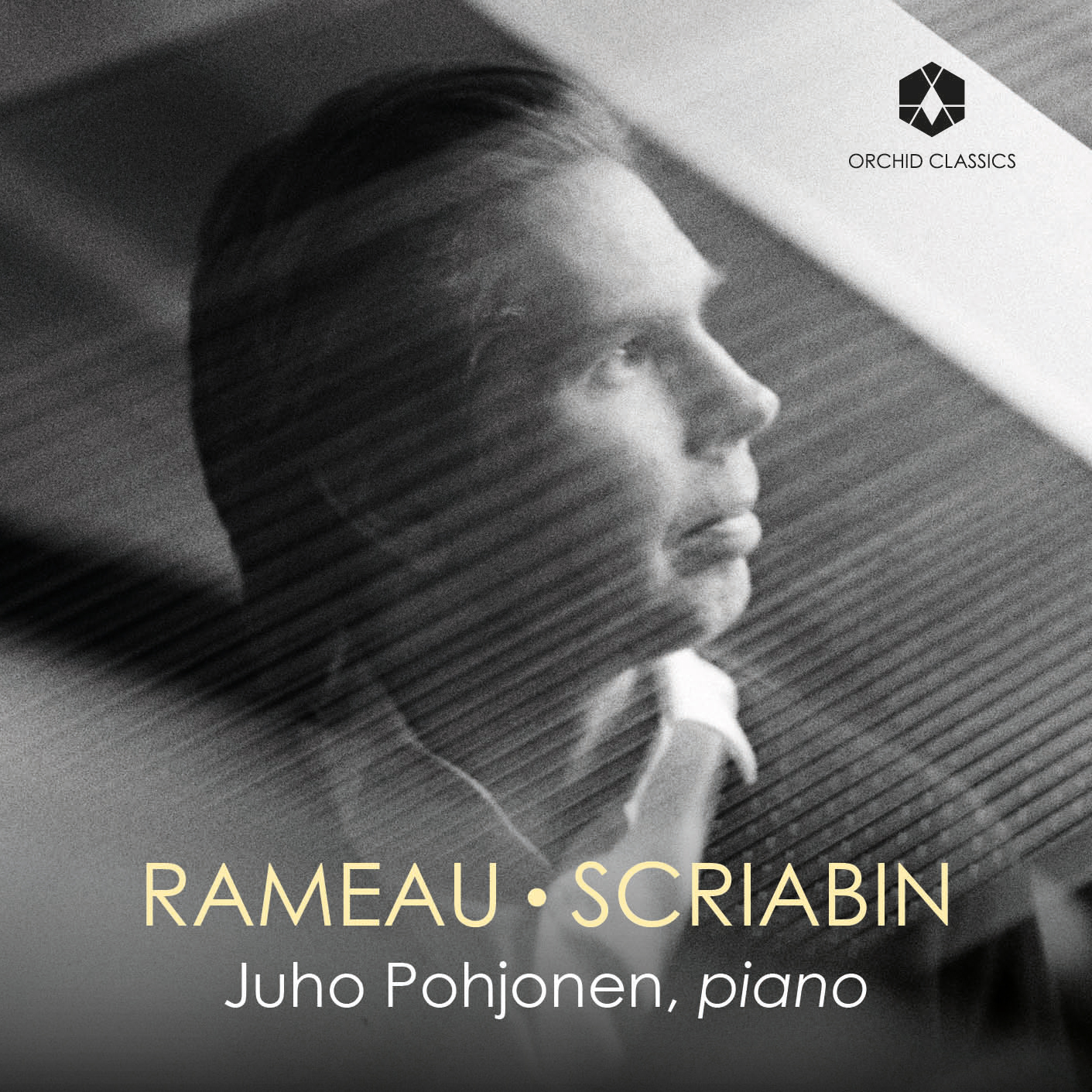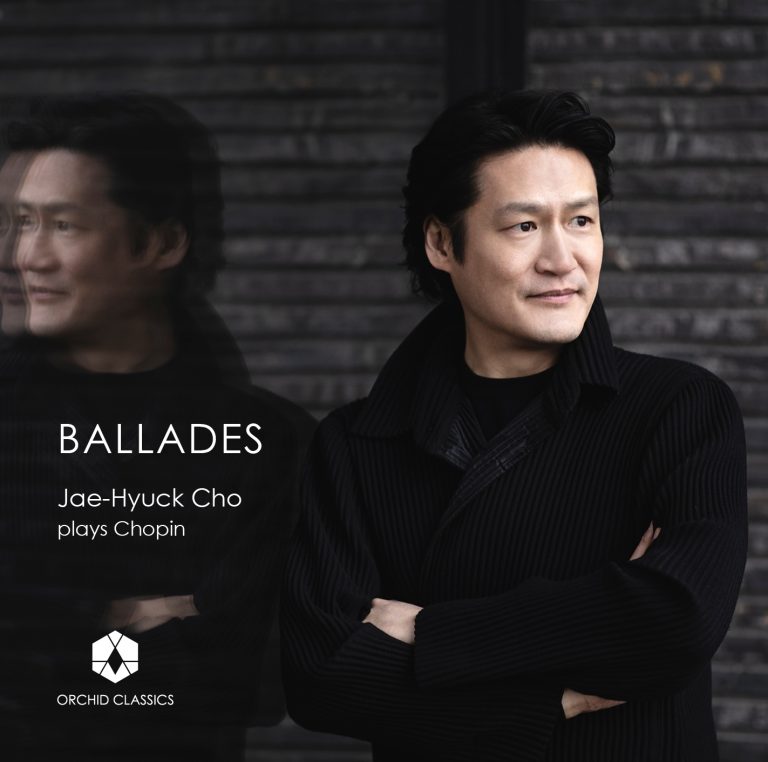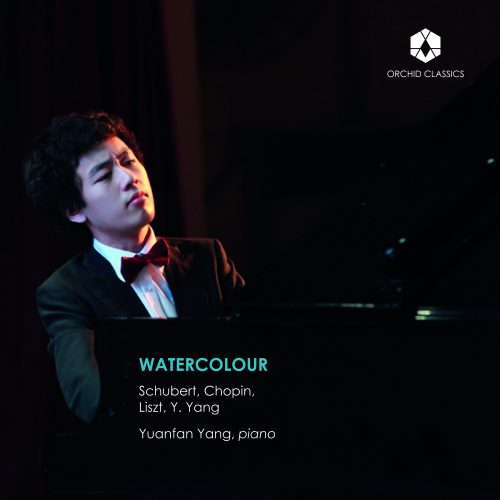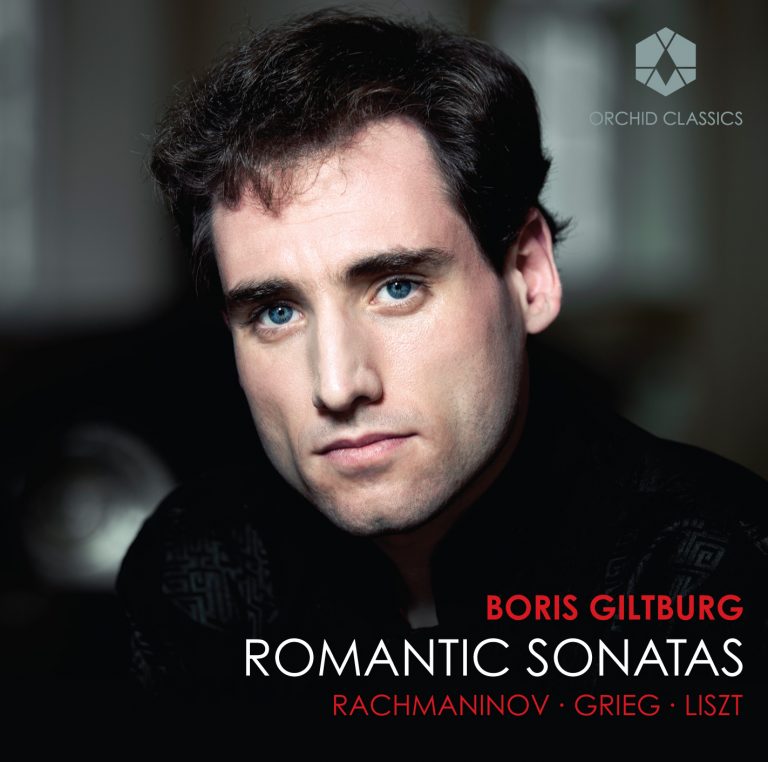Artist Led, Creatively Driven

RAMEAU & SCRIABIN: VISIONARIES OF THE KEYBOARD
Juho Pohjonen, piano
Release Date: June 21st
ORC100312
RAMEAU & SCRIABIN: VISIONARIES OF THE KEYBOARD
Jean-Philippe Rameau (1683-1764)
Nouvelles suites de pièces de clavecin
Suite in A minor, RCT 5
1. I Allemande
2. II Courante
3. III Sarabande
4. IV Les Trois Mains
5. V Fanfarinette
6. VI La Triomphante
7. VII Gavotte et six Doubles
Suite in G major, RCT 6
8. I Les Tricotets (Rondeau)
9. II L’Indifférente
10. III Menuet I – Menuet II
11. V La Poule
12. VI Les Triolets
13. VII Les Sauvages
14. VIII L’Enharmonique
15. IX L’Égyptienne
Alexander Scriabin (1872-1915)
16. Sonata No.6, Op.62
17. Sonata No.7, Op.64 “White Mass”
Juho Pohjonen, piano
In the grand narrative of musical history, Jean-Philippe Rameau (1683-1764) and Alexander Scriabin (1872-1915) may appear as distant stars in the firmament, separated by centuries and cultural boundaries. Rameau, a luminary of the French Baroque, and Scriabin, a Russian visionary heralding the onset of Modernism, navigated distinct artistic realms. Yet beneath the surface of their contrasting styles, a closer look reveals striking affinities – an aligned artistic vision to venture beyond harmonic conventions, charting unexplored soundscapes through tonal experimentation.
Rameau’s influence on the theory of Western music is undeniable. His work, as demonstrated in his seminal treatise, Traité de l’harmonie (1722), effectively set the stage for the tonal innovation that would define Western compositional practice for centuries. Scriabin, emerging in a world already rich with harmonic development, sought to push these established boundaries further. Both composers, despite their differing historical contexts, shared a fascination with the possibilities inherent within the tonal system of their times. Rameau’s theories crystalised the rules of the game, so to speak, which Scriabin later chose to bend in pursuit of new emotional and aesthetic effects.
When it comes to their keyboard works, the connection becomes more palpable. Rameau’s harpsichord compositions, while precise and ordered, are never mechanical, bringing an emotive fluidity to the elegance of the Baroque. Scriabin approached the piano with a similar blend of precision yet freedom. Both composers were also adept at transforming decorative elements, such as trills and other ornaments, into essential components of their musical language. These embellishments, carefully crafted, transcended mere ornamentation to become crucial to the narrative flow of their compositions.
Rameau and Scriabin were also united by the philosophical undercurrents that informed their musical creations. Rameau, living in the Age of Enlightenment, exemplified its ideals of clarity, order, and reason in his approach to music theory and composition. His systematic exploration of harmony mirrored the scientific spirit of his time, seeking to understand and organise the principles of music as one might categorise the natural world. In contrast, Scriabin’s compositions are imbued with the spirit of mysticism and the search for transcendence that marked the late Romantic period and the dawn of the 20th century. Deeply influenced by theosophy – a spiritual movement that sought to uncover hidden knowledge and unite all religions – Scriabin’s works often reach for the sublime in a quest to express the inexpressible, reflecting the zeitgeist and its fascination with emotion, individualism, and the exploration of the irrational and the subconscious.
Nouvelles suites de pièces de clavecin (1727) is a showcase of Rameau’s ingenuity through a spectrum of dance movements and character pieces, each exploring a distinct thematic landscape. Of particular note in the context of this recording is the subtle introduction of the octatonic scale in the second suite, a harmonic blueprint that re-emerges prominently in Scriabin’s bold pianistic voice, foreshadowed in Rameau’s imagination.
The Suite in A minor begins with an “Allemande”, where the customary stately dance is elevated with interwoven voices, resulting in a rich, luxuriant musical fabric. Rameau’s penchant for embellishment is evident as he adorns the piece with triplet codas, adding an air of complexity and sophistication. Following the “Allemande” is the “Courante”, a dance that traditionally exudes elegance and flowing movement. Rameau’s interpretation captures this spirit yet introduces sharp rhythmic contrasts that infuse the piece with a sense of grandeur and breadth reminiscent of French orchestral textures. The “Sarabande” is a display of Rameau’s skill in infusing gestures and ornaments that mimic the grace of a dancer, with arpeggiation and decoration that make the keyboard come to life with choreographed precision.
“Les trois mains” is a marvel of contrapuntal writing and keyboard technique, where Rameau employs frequent hand crossings to create the illusion of a third hand. The complex interplay of parts offers both a technical challenge and an aural delight, obscuring the boundaries between the possible and the illusionary. The charming “Fanfarinette” reveals Rameau’s gift for musical portraiture, with graceful melodies exuding innocence and exuberance. The energetic “La Triomphante” features occasional glimpses of Rameau’s adventurousness, including a sequence of diminished chords that resolve in unexpected ways, briefly but strikingly disrupting the harmonic landscape.
The suite concludes with a “Gavotte et 6 Doubles”, a set of variations that begins with a simple, noble theme and transforms through increasingly intricate and virtuosic elaborations, demonstrating Rameau’s mastery of variation form. The gavotte’s theme itself provides interest, starting an octave lower before ending an octave higher, establishing an upward motion. This rising contour persists subtly but insistently across the six doubles, imbuing the variations with a sense of scaling a musical staircase towards its summit.
The Suite in G major opens with “Les tricotets”, a rondeau that playfully captures the swift, precise movements of knitting hands through its lively rhythms and melodic interaction. In “L’Indifférente”, two voices intertwine conversationally, neither rising above the other. The two “Menuets” are presented in succession, the first in a major key and the second in minor, creating a contrasting pair that is both elegant and introspective.
“La Poule” is one of Rameau’s more pictorial pieces, with its pecking rhythms and vivid ornamentation conjuring the image of a hen, while the underlying drama suggests an untold story, perhaps of pursuit or escape. “Les triolets” features a lyrical three-part melody that evokes nostalgia, as if uncovering a tender relic from the past that is both sweet and ephemeral. “Les Sauvages” paints musical impressions of the New World, with its bold thematic leaps embodying the perceived innocence and raw vitality of the “noble savage.”
In “L’Enharmonique”, Rameau experiments boldly with harmony. The piece reaches its dramatic high point as an octatonic scale – a sequence of alternating whole and half steps – emerges in the bass, building tension until Rameau pauses dramatically on a dissonant diminished chord aching for resolution. This daring moment shows Rameau’s pioneering spirit, willing to break conventions in pursuit of new sonic frontiers. The collection concludes with “L’Egyptienne”, a depiction of exotic allure and caprice. The descending arpeggios and crossed-hand techniques create a soundscape that is both vivid and enigmatic, capturing the imagination with its evocative power.
Echoing Rameau’s tonal experiments, Alexander Scriabin transitioned from the chromaticism that marked the late Romantic era into his own realm of avant-garde harmony. While Rameau’s brief venture into enharmony and the octatonic scale hinted at the expansive and untapped potential of tonal music, Scriabin, among other composers, took this baton and ran headlong into new harmonic dimensions. His Sixth and Seventh Piano Sonatas are emblematic of this journey, embracing a new harmonic language characterised by the ambiguity and fluidity of the octatonic scale. In these sonatas, Scriabin’s use of the scale is not merely a vestige of Baroque curiosity but a deliberate step into the mysticism and psychological depth emerging from the scale itself.
In his Piano Sonata No.6, Op.62, composed in 1911, Scriabin grappled with the ominous and unfamiliar forces of the octatonic harmonies. As a mode of limited transposition, the octatonic scale offers only a narrow range of harmonic possibilities with its mere three transposition levels. The restricted nature of the scale gave rise to a musical language that seemed almost possessed by its own arcane rules. Introspective and troubled, the music meanders among static, ambiguous chords, and shifting, dreamlike patterns. Melodic fragments appear and vanish, contributing to a pervasive atmosphere of an unseen presence that occasionally coalesces into a more tangible state – these episodes Scriabin marks with poignant expressions such as “le rêve prend forme” (the dream takes shape) and “épanouissement de forces mystérieuses” (the blossoming of mysterious forces).
As the piece advances towards its coda, the music transforms, acquiring a liquid quality, a moment of enchantment Scriabin denotes with “tout devient charme et douceur” (everything becomes charm and sweetness). This moment of repose, however, teeters on the precipice of the tumultuous finale. The coda bursts forth as a fiendish dance, encapsulated by the chilling inscription “l’épouvante surgit, elle se mêle à la danse délirante” (terror arises, it mingles with the delirious dance). Here, Scriabin pushes the piano to its limits, even including a note that lies beyond the conventional keyboard, symbolizing a transcendence of musical boundaries.
The confrontation with the unfamiliar forces of the octatonic left Scriabin unsettled. In his Piano Sonata No.7, Op.64 “White Mass” (1911), he sought escape from the spectral shadow of the sixth sonata, finding liberation in a return to the diatonic scale. If the octatonic scale1 may have symbolised for Scriabin the repetitive cycles of physical existence, the diatonic scale would have hinted at a space far beyond the shadows of mortal thought. As a foundational building block of Western music, the diatonic scale consists of seven pitches in a whole and half step pattern that forms the basis for major and minor scales. Deeply ingrained in musical tradition since the Baroque era, the diatonic scale provided Scriabin a gateway back to the metaphysical, its twelve possible transpositions hinting at multidimensional realms beyond the boundaries of the octatonic. This journey from the confining octatonic into the expansive diatonic echoes Scriabin’s lifelong quest to transcend the physical world and attain spiritual freedom.
At the sonata’s opening, the octatonic music reflects the turbulence of the physical world. Gradually, the introduced diatonic elements expand this to the metaphysical. At the sonata’s end – the only place where the music is purely diatonic – the music fades into a question mark, a realm forever beyond human comprehension. Through these sonatas, Scriabin depicts a struggle to transcend the darkness of mortal limits for a metaphysical world that perpetually eludes our grasp. We ascend into vistas of revelation that disappear even as we see them, left with only fragments of a vision that lies tantalizingly past the furthest reach of thought. Yet in the shift from the octatonic to the diatonic, we sense Scriabin’s deep yearning to transcend a world circumscribed for one of greater possibility.
In this light, Scriabin’s later sonatas, with their return to diatonic harmony, do not merely represent a retreat from the avant-garde but rather a full-circle acknowledgment of the foundational language of Western music that Rameau so eloquently expressed. The closing passages of Scriabin’s Seventh Sonata, with their diatonic clarity, could be seen as a nod to the enduring legacy of Rameau’s tonal principles – a harmonious dialogue across the centuries. As we observe Scriabin’s odyssey from the octatonic back to the diatonic, we are reminded that innovation is often a spiral rather than a linear path, where the new is in constant conversation with the old. In this way, Scriabin’s work can be understood not as a departure from but as a continuation of the musical development that Rameau so masterfully began, with each composer’s voice contributing to the evolving lexicon of Western music’s grand narrative.
Juho Pohjonen
Juho Pohjonen
Piano
Juho Pohjonen, one of today’s most captivating pianists, has garnered international acclaim for his performances across Europe, Asia, and North America. The Finnish pianist showcases his versatility appearing with symphony orchestras, in recital, and through chamber music collaborations. Across these settings, his repertoire frequently highlights works by acclaimed Finnish composers such as Esa-Pekka Salonen, Kaija Saariaho, and Jean Sibelius, reflecting his deep affinity for Scandinavian music.
Pohjonen has been invited to perform as soloist with renowned orchestras such as the Cleveland Orchestra, Finnish Radio Symphony Orchestra, LA Philharmonic, Philharmonia Orchestra, and Tonhalle Orchestra Zürich. He has collaborated with esteemed conductors, including Marin Alsop, Marek Janowski, Esa-Pekka Salonen, Osmo Vänskä, and Pinchas Zukerman.
As a recitalist, Pohjonen has graced stages in major cities such as Antwerp, Hamburg, London, New York, Singapore, Vancouver and Warsaw. His festival appearances include Bergen, Lucerne, Mecklenburg-Vorpommern, Moritzburg and Savonlinna.
A graduate of the Sibelius Academy in Helsinki, where he earned his Master’s Degree in 2008, Pohjonen’s talent has been recognised through numerous accolades. In 2009, he was selected by Sir András Schiff as the winner of the Klavier Festival Ruhr Scholarship and has also been a prize winner at various international and Finnish competitions.
In 2019, Pohjonen launched MyPianist, an innovative AI-based iOS app that provides interactive piano accompaniment. Designed and programmed by Pohjonen himself, MyPianist serves as a “virtual pianist” for musicians seeking to refine their skills or explore new repertoire, reflecting his dedication to making music accessible and engaging for all.









